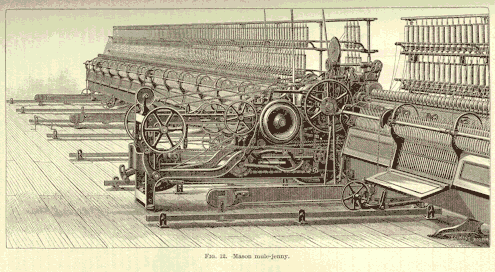Today, we'll visit America's first industrial city. The University of Houston's College of Engineering presents this series about the machines that make our civilization run, and the people whose ingenuity created them.
James Watt's colleague, Matthew Boulton, said to James Boswell, in the late 18th century, "I sell here, Sir, what all the world desires to have, power." Boulton's remark was a fine double entendre. England's political power was riding high, but it was being propelled by increased steam and water power. The English textile industry, in particular, was powered by these new engines.
We lagged England in making steam engines, but we had higher hills and more rivers -- we could do wonderful things with water power. So in 1810 the New England trader Francis Cabot Lowell decided to create an American textile industry. Historian Harry Lankton tells us how he went to England to spy on their equipment -- how he came back here to recreate the English textile technology on the Charles River in Waltham, Massachusetts.
The Waltham mills soon wanted more power than they could get from the Charles. So the mill owners moved north of Boston to the Pawtucket Falls on the Merrimack River. There they cut a Martian landscape of canals and mill-races to supply the largest array of water-powered textile mills the world had ever seen. They built the new industrial city of Lowell, Massachusetts.
By 1836 twenty textile mills in Lowell were producing fifty million yards of cloth a year. They employed 8000 people. The mills were driven by huge batteries of water wheels. In the 1840s they began replacing these water wheels with the new Francis water turbines, and the factories kept on expanding. The site was soon generating nine thousand horsepower -- modest by today's standards, but a huge enterprise in those days.
The workers were largely poor young rural women. They lived in tightly controlled boarding houses -- no drinking or debauchery. The company regulated their lives. It ran churches and sponsored cultural events. It boasted that these were Utopian communities and compared them with English sweatshops. A totalitarian air hovered over their Utopia, of course; but what nineteenth-century factory was democratic? They called Lowell the "Venice of America."
As time passed, later generations of mill owners forgot about building workers' Utopias. By the late nineteenth century, Lowell had become just one more big ugly industrial town.
Yet Lowell had been a first step toward American industrialization. Historical preservationists are now rebuilding the old mill-races and water-supply canals. Sunday visitors will be able to stroll through the old mill-works and experience something of the Venice of America. They'll be able to look, firsthand, at the ingenuity and foresight that got us started.
I'm John Lienhard, at the University of Houston, where we're interested in the way inventive minds work.
(Theme music)
Dublin, T., Lowell: The Story of an Industrial City. Official National Park Handbook, Washington, D.C.: Division of Publications, National Park Service, (no date.)

(Appleton's Cyclopaedia of Applied Mechanics, 1892)
Mule-Jenny Spinning Machine.